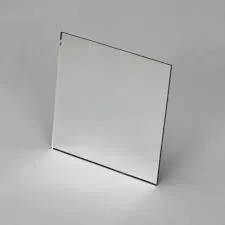

The Beauty and Versatility of Blue Float Glass
Blue float glass is a remarkable material that has gained popularity in both architectural and interior design applications. Known for its aesthetic appeal and practical attributes, this type of glass emerges from the float glass manufacturing process, where molten glass is floated on molten tin to produce a smooth, even surface. The resulting product is not only visually striking but also versatile enough to suit a range of design purposes.
One of the key characteristics of blue float glass is its vibrant hue. The deep blue color can vary in intensity, providing options for different tones, from soft sky blue to rich cobalt. This variation allows architects and designers to tailor the glass to the specific ambiance and atmosphere they wish to create. Whether it is used in a large commercial building or a cozy residential space, blue float glass creates an impactful visual statement.
In architectural applications, blue float glass is often utilized for windows, facades, and partitions. Its color not only contributes to the overall aesthetics of a building but also plays a role in energy efficiency. By incorporating blue float glass, buildings can benefit from reduced glare and enhanced thermal insulation, which helps maintain comfortable indoor temperatures. Additionally, the reflective quality of the glass can create stunning visual effects, especially in urban settings where light interaction is key.

Beyond its architectural uses, blue float glass is also favored in interior design. It can be applied in various ways, such as table tops, shower enclosures, and decorative wall panels. The glass adds a modern touch to interior spaces and works beautifully with a range of design styles, from contemporary to minimalist. Its versatility means it can be combined with wood, metal, or other materials, effectively enhancing the overall aesthetic of a space.
Moreover, blue float glass is easy to maintain and durable, making it a practical choice for both residential and commercial environments. Its resistance to fading and scratching ensures that the vibrant color remains consistent over time, adding long-term value to installations.
As sustainability becomes increasingly important in design and construction, blue float glass offers an eco-friendly advantage. The manufacturing processes can often be optimized to reduce waste, and the glass itself can be recycled at the end of its life cycle, further contributing to its appeal.
In conclusion, blue float glass represents both beauty and functionality in modern design. Its captivating color, versatility, and practical benefits make it a favored choice among architects and designers. As cities continue to evolve and embrace innovative materials, blue float glass stands out as a remarkable option that adds both elegance and efficiency to a wide variety of applications.